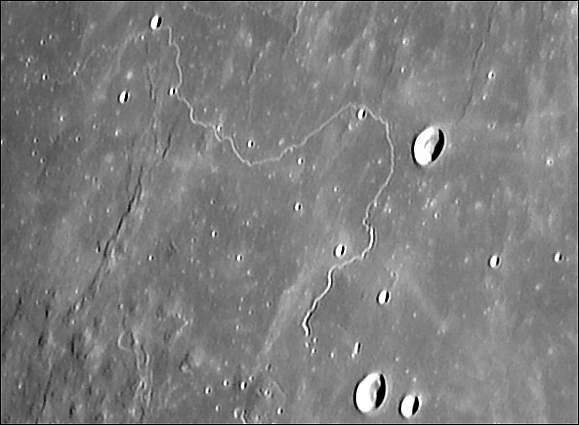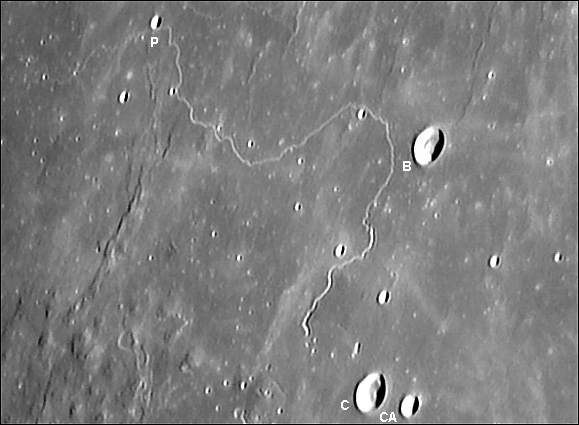Difference between revisions of "June 7, 2004"
| Line 1: | Line 1: | ||
__NOTOC__ | __NOTOC__ | ||
=Marius Rille= | =Marius Rille= | ||
| + | <!-- Start of content --> | ||
<table width="640" border="0" align="center" cellpadding="4" cellspacing="2"> | <table width="640" border="0" align="center" cellpadding="4" cellspacing="2"> | ||
<tr> | <tr> | ||
| Line 50: | Line 51: | ||
<!-- Cleanup of credits --> | <!-- Cleanup of credits --> | ||
<p> </p> | <p> </p> | ||
| + | <!-- End of content --> | ||
{{wiki/ArticleFooter}} | {{wiki/ArticleFooter}} | ||
Revision as of 18:19, 7 February 2015
Marius Rille
Marvelous Marius Rille Sinuous rilles have led some lunar scientists astray. The curving outlines led to proposals that such rilles were meandering water streams, although by shape alone a giant worm might have been equally defensible! But the Moon's lack of water and life eliminate those origins. Sinuous rilles do resemble - and probably are - lava channels, made by lava flowing downhill from a source vent. The Apollo 15 visit to the Hadley Rille supported that interpretation. So it is not surprising to find the wonderful Marius Rille at the north end of the volcanic Marius Hills complex. What is surprising is that such an excellent image of the rille was taken with a 12" telescope! Legault's image shows the 2 km wide rille starting northwest of the crater Marius C without any obvious vent and running about 250 km (according to Rukl's Atlas of the Moon). It takes a turn to the left near Marius B, and at Marius P narrows to about 1 km width. Look northeast of Marius P to see a much thinner rille that is barely visible on Lunar Orbiter IV images. This image also reveals a central peak in the 11.4 km wide Marius C and some sort of off-center hill in Marius B (11.6 km). Only a few impact craters this size have central peaks - the transition to complex craters begins in craters with diameters of about 15 km. Move the mouse over the image to see crater designations. Technical Details: Originally posted February 29, 2004 Related Links: Yesterday's LPOD: Humorum Tomorrow's LPOD: Ptolemaeus |
Author & Editor:
Charles A. Wood
COMMENTS?
Register, Log in, and join in the comments.





